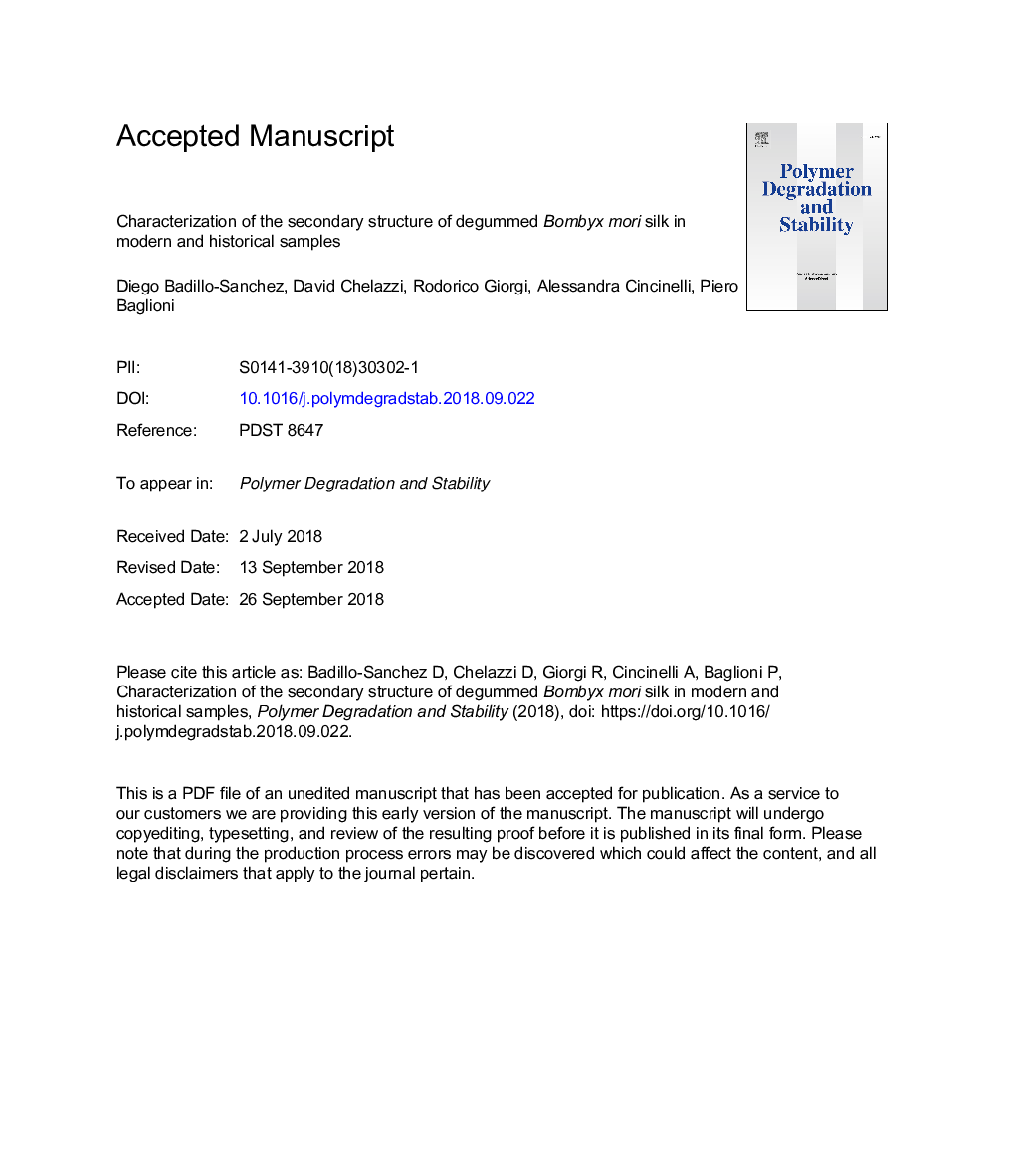| Article ID | Journal | Published Year | Pages | File Type |
|---|---|---|---|---|
| 11027045 | Polymer Degradation and Stability | 2018 | 36 Pages |
Abstract
Understanding the degradation mechanisms of silk is essential for improving preventive conservation measures, and developing consolidation materials to restore the degraded fibers. Here, modern and historical silk samples were analyzed with an inclusive set of analytical techniques, in order to investigate the changes in the protein secondary structure that occurred upon natural aging or manufacturing processes. FTIR 2D Imaging-Chemical mapping allowed the non-invasive characterization of fibroin structure, and the obtained information was supported by Optical microscopy (OM), Scanning electron microscopy (SEM) and thermal analysis (Thermogravimetry, TGA, and Differential Scanning Calorimetry, DSC). Based on the acquired data, a different degradation stage was proposed for each historical sample, highlighting a heterogeneous conservation status.
Keywords
Related Topics
Physical Sciences and Engineering
Chemistry
Organic Chemistry
Authors
Diego Badillo-Sanchez, David Chelazzi, Rodorico Giorgi, Alessandra Cincinelli, Piero Baglioni,
